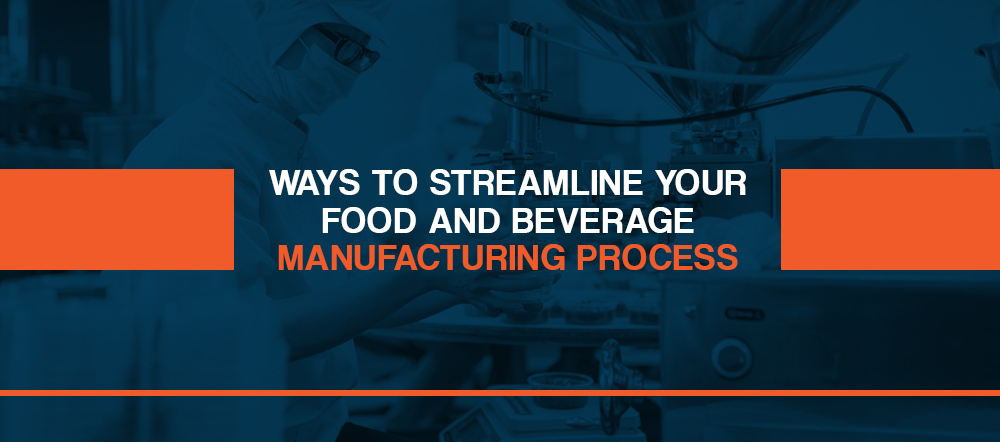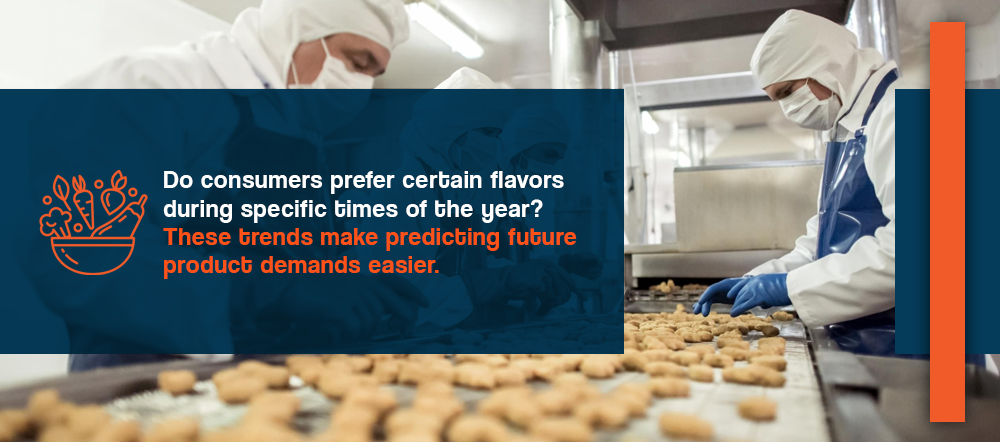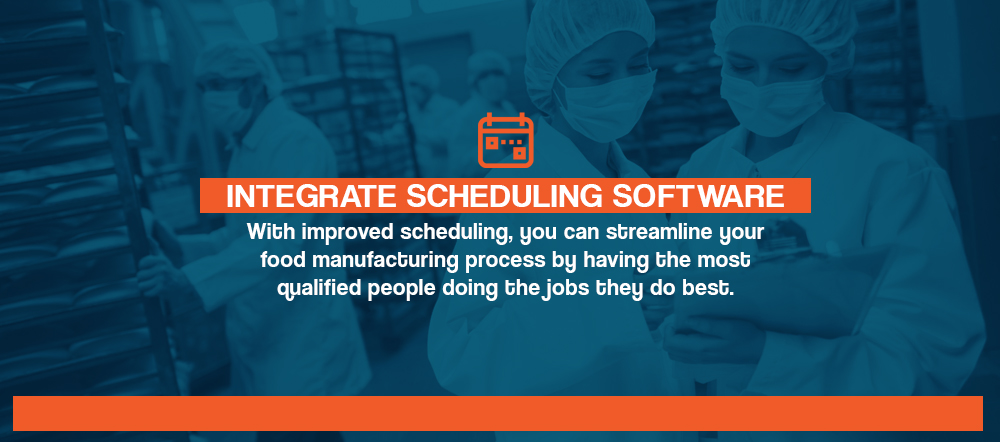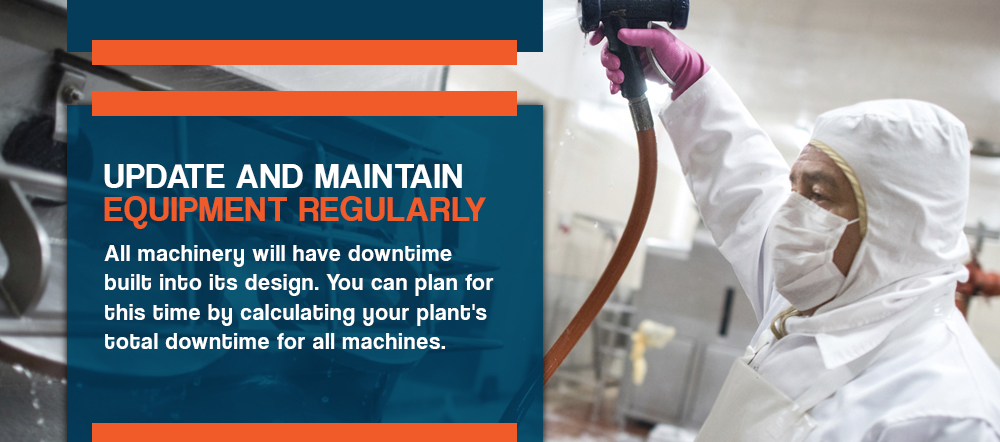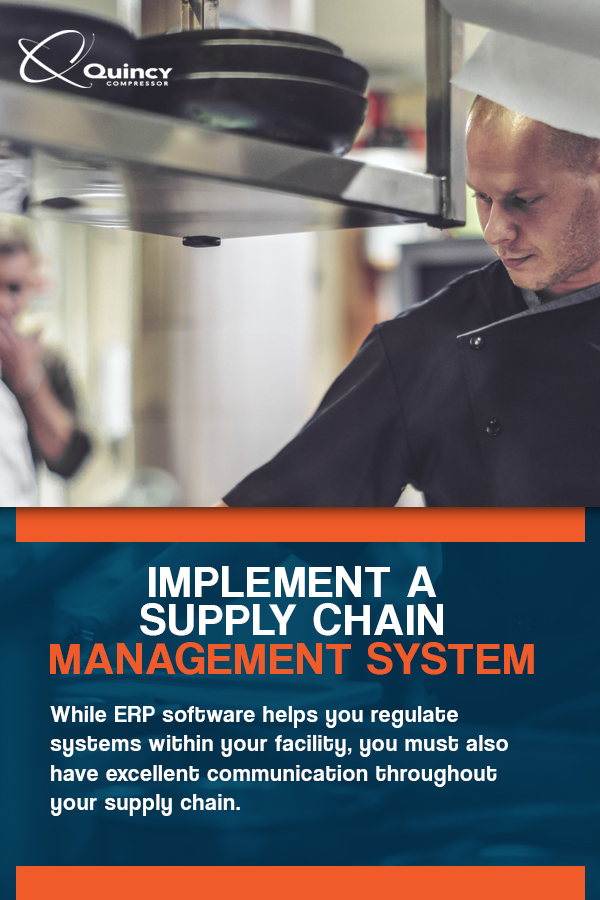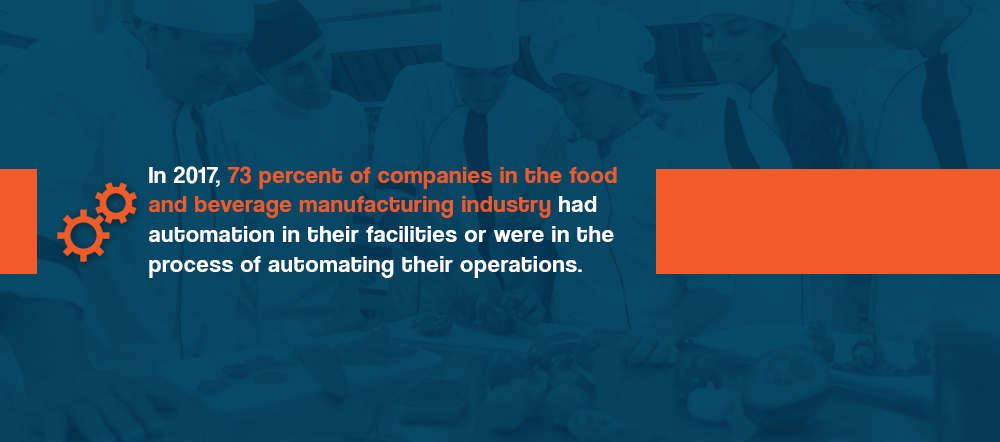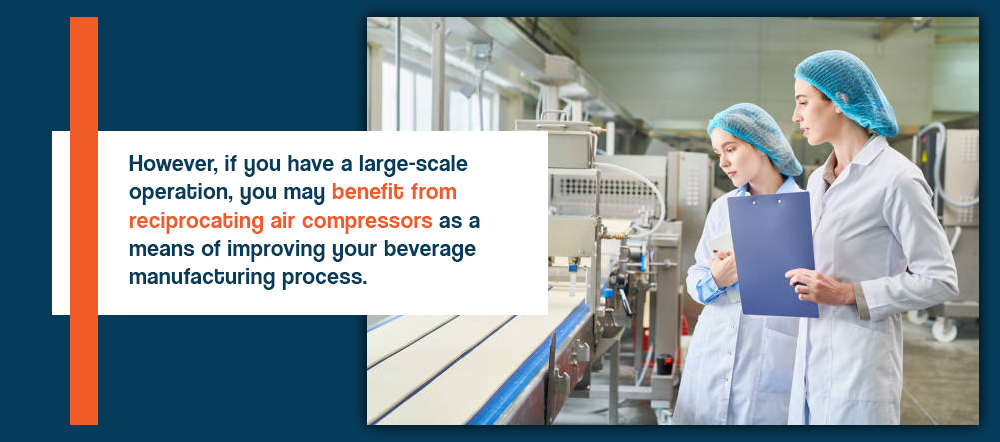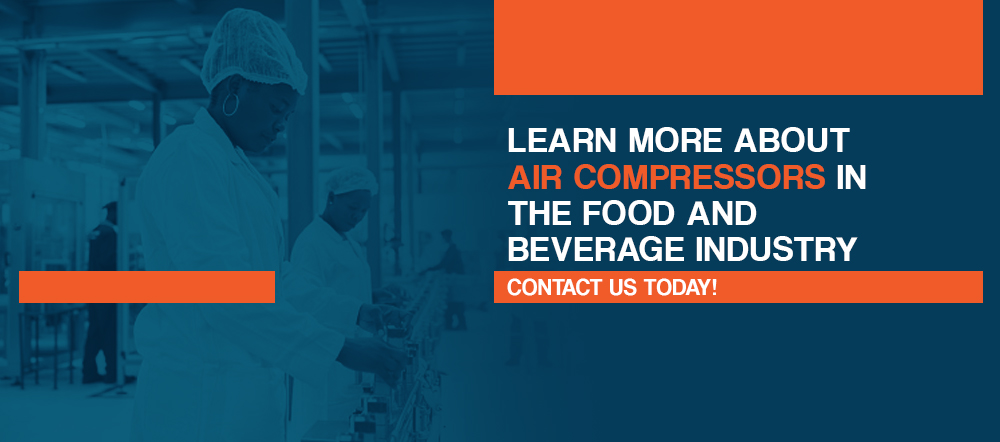Table of Contents
- Know the Market and Its Demands
- Use Forecasting to Improve Your Food Manufacturing Process
- Integrate Scheduling Software
- Improve Inventory Management
- Update and Maintain Equipment Regularly
- Implement a Supply Chain Management System
- Consider Automation
- Get an Air Compressor
- How Can You Use Rotary Screw Compressors in Food Processing?
No matter what your business makes, there are several ways to improve your food and beverage manufacturing process. Knowing ways to streamline your production will reduce costs and boost profits. However, because some methods may require an investment of time and money in equipment and training, you must determine if those upgrades will bring your facility the return you need. Some tried and true methods for improving your beverage or food manufacturing process include:
Know the Market and Its Demands
Before you start operations, you need to know what consumers want. You will not make a profit on a product people refuse to buy. Keep track of the market and its demands to ensure your offerings will fit within the desires of your targeted customers. A thorough analysis of your products can help you cut out those that do not sell.
Understanding demand has led some manufacturers to choose a demand-driven approach to production. These facilities make and ship products based on consumer demand when it occurs. This form of make-to-order manufacturing is an option if you have excellent communication along your entire supply chain to adapt to your changing production needs. An alternative to the demand-driven approach is predicting what will become popular in the coming weeks and months.
Use Forecasting to Improve Your Food Manufacturing Process
When you use software that tracks your sales, you can identify popular products and spot trends. Do consumers prefer certain flavors during specific times of the year? These trends make predicting future product demands easier. If you identify that consumers prefer certain flavors during specific times of the year, you can change your product lineup to reflect that and become more profitable. For example, consumers may prefer more fresh, produce-based foods in the summer like salads and heavier, heartier foods like stews in the winter.
Enterprise resource planning software (ERP) gives you the tracking tools you need to determine seasonal forecasting for your manufacturing business and much more. Even if you introduce a new product that does not have past data to generate forecasts for you, the ERP software can use sales information from similar foods or drinks.
When you know which foods will be in demand before the season comes, you can prepare your facility to change product production if needed. Forecasting market demands is just another method for streamlining your food manufacturing process by producing the products your customers want when they want them.
Integrate Scheduling Software
With improved scheduling, you can streamline your food manufacturing process by having the most qualified people doing the jobs they do best. Among the ways to streamline your beverage or food manufacturing process that gets your facility the most significant benefits is ERP software, which you can use for forecasting as well as employee scheduling.
Scheduling software makes it easier to get appropriately trained workers doing the jobs they have expertise in. This ability to schedule workers correctly makes your facility more efficient. With scheduling software, you don’t have to worry about employees making mistakes from a lack of information.
You can also trace back production to see who worked the floor during the production of specific batches. This feature of the ERP software makes it possible to see how mistakes that led to recalls happened. You can also prove that you had qualified workers scheduled during the event. The scheduling information from ERP software keeps you in regulatory compliance and makes tracking problems faster and easier.
With this software, you can also identify any gaps in the number and type of skilled workers you have. You can schedule training for your existing staff to increase the number of jobs they can do or decide if you need more workers.
This software can also help with scheduling machine cleaning and batch changes. If any of your products are allergen-free, you will need to clean your equipment thoroughly before making those products. ERP software can help you determine how long your machinery will require for cleaning and maintenance, so you can best schedule changeover to new product production.
By maximizing the efficiency of your workforce and equipment, you can discover yet another method for how to streamline your beverage manufacturing process or food production.
Improve Inventory Management
Just as you need to manage your staff, you must also handle your inventory correctly. Inventory software can help you manage the raw goods you have coming into your facility. You can reorder from suppliers as needed or schedule regular ordering based on your production levels. By regulating your ordering process, you never have to purchase more than you need.
Controlling inventory becomes especially critical if you use fresh products with tight expiration dates. For instance, raw meat and fresh milk need regular reordering because they do not keep for long periods. When you order too much of these ingredients, you’ll end up throwing some away.
When you use ERP to track or forecast consumer demands, you can use the collaborative aspects of the software to communicate any upcoming changes to those in charge of ordering supplies.
Additionally, changes to advertising or sales incorporated into the ERP forecast can affect your supply needs. First, see how those changes would impact the outlook, then once you implement those alterations in your marketing methods, you can also adapt your supply ordering amounts to reflect the predicted changes in your sales.
Update and Maintain Equipment Regularly
Unexpected breakdowns can set back your operations without warning. Don’t let these problems plague your business. One of the easiest ways to improve your food manufacturing process is by conducting regular inspections and maintenance of all your mechanical equipment.
No piece of equipment operates with perfect efficiency. All machinery will have downtime built into its design. You can plan for this time by calculating your plant’s total downtime for all machines. Typically, new equipment has between 97.5 and 99 percent efficiency, which means that it should only go down between one and 2.5 percent of the time. To verify the reading, conduct tests of each piece of equipment you have over multiple days to find the exact efficiency value. Once you know all these numbers, multiply them together to find your facility’s total efficiency. Subtract that number from 100 percent to calculate downtime.
For example, if you have five pieces of equipment with efficiencies of 97.5, 98, 99, 98 and 97.5 percent, multiply these together to find the total efficiency:
0.975 times 0.98 times 0.99 times 0.98 times 0.975 equals 0.904.
This total is equivalent to 90.4 percent efficiency. Downtime is this number subtracted from 100 percent:
100 percent minus 90.4 percent equals 9.6 percent.
The 9.6 percent downtime indicates at least one of your machines should go down just under 10 percent of the time. A drop in this number indicates poor maintenance or ineffective repairs. If you want to improve this number, you can schedule regular maintenance as suggested by the manufacturer for each of your pieces of equipment.
Don’t just attend to your equipment when it needs repairs. Instead, be proactive in taking care of it. Regular lubrication of moving parts, for example, keeps them running smoothly and reduces the wear on the system.
Have workers constantly lookout for signs of wear on the equipment they use. Put them in charge of daily evaluations to determine if you need to schedule repairs or preventative maintenance on your equipment. With frequent checks, you can prevent problems from progressing to the point of breakdown.
When conducting repairs, keep track of which parts you need to replace your equipment. Over time, you may identify patterns or see if any piece of machinery needs more frequent repairs. This data can tell you if a machine has become more of a liability than an asset and needs replacement.
You will need to identify the threshold of efficiency below which you cannot tolerate having a piece of equipment without it costing you money from downtime. Using the repair frequency information that you collected, you will be able to find which equipment needs replacement quickly. The sooner you can get poorly operating machines off your floor and replaced with more efficient models, the more productive your facility will be.
Implement a Supply Chain Management System
While ERP software helps you regulate systems within your facility, you must also have excellent communication throughout your supply chain. Supply chain management software can help your facility become an essential link in the supply sequence, from the farmers to the customers.
One of the benefits of communication throughout your supply chain is the ability to trace goods back to their producers. For example, if you must recall salad mixes, you can trace the batch back to the farms you purchased the lettuce from. This information can help the farmers make corrections in their operations to prevent future problems. If your recalled products did not have a common origin, your facility might have contributed to the problem, and you will know to make changes to fix the issue.
Tracking the origins of your raw materials should also come with the ability to rate those vendors whom you work with. For instance, if you find a vendor regularly fails to send goods to your facility on time or at a promised quality level, you can rank them lower in your system. In the future, when looking for new vendors, you will know from the old score to not choose that one. This scorecard creation ability ranked high in a recent survey of food and drink manufacturers as something they would like to see more of in supply chain technology.
Communication throughout the supply chain should also include real-time order tracking of either raw materials to your plant or goods from your facility to your customers. When you know exactly where your order is, you won’t need to store as many raw materials on site. You can convert the storage space into new working areas with more equipment to speed operations.
Consider Automation
Automation is a common solution to efficiency problems. In 2017, 73 percent of companies in the food and beverage manufacturing industry had automation in their facilities or were in the process of automating their operations.
The food industry is a natural fit for automation. The repetitive movements that people do during packing and food preparation are motions that machines can easily replicate. Even tasks that once required human judgment, such as packing foods based on visual appeal, automated robots can now do with 3D vision sensors and software to optimize packing.
Automation does not mean inflexibility. In fact, with computer control of multiple systems, you can gain increased flexibility. Flexibility from automation is another of the many ways to streamline your food manufacturing process. This type of plant automation control allows for future growth and flexibility if you need to replace any of the equipment. With supervision from one computer, you can easily make changes, such as shifting production to different machines or creating customized orders for seasonal sales or a customer’s whims.
This flexibility through central control also makes changing operates easier. Such a benefit helps your operations greatly if you need to conduct regular maintenance or repairs on one piece of equipment. Designers of automated systems understand this need an integrate the ability for the system to recognize when you add or remove modules.
Through robotic machinery and the appropriate use of it, you can create mass customization or personalization for your customers. This attribute improves your facility if you are interested in optimizing your food and beverage production that sells directly to consumers, as many internet-based businesses do. The key to being able to accomplish this task is through constant communication between your devices and how they automate processes.
When you adapt your equipment to make small, customized production runs, you can increase your ability to sell to particular customers or make limited-edition batches of certain products that you can sell at a premium.
Get an Air Compressor
Air compressors offer multiple benefits in the food and beverage manufacturing business. They can make cutting or filling foods easier and pumping liquids into products possible. However, you need to distinguish your uses of the machines, based on whether their air supply will contact your products.
For example, if the compressed air contacts the food, you cannot use a compressor that lubricates with oil due to the potential for contamination. You can use oil-containing air compressors, elsewhere, though.
Because oil-free compressors are such a vital part of the growing food and beverage industry, market forecasters predict this piece of equipment will see its fastest growth between 2019 and 2024. In addition to preventing oil contamination, these air compressors are better for the environment and have smaller sizes than those that use oil. These benefits increase their desirability for the food industry, in addition to raising their costs.
To increase the efficiency of your oil-free compressor, draw air from a refrigerated room. Doing so can improve efficiency by eight percent. The air already filtered and remains below the dew point, which keeps excessive moisture out of your products. Monitor the pressure on either side of any filters you use in your air compressors. When the pressure drops significantly, it indicates the screen needs replacement.
Oil-free compressors for use around your products are crucial because an oil-lubricated device that has a 2ppm carryover will send four gallons of oil into a system over a year. This oil could deposit onto equipment or food, resulting in productivity-killing recalls.
Because you need to balance costs with the air compressors you use, you may also want to get models that have oil for use away from the production line. When using oil-lubricated air compressors, you can implement several means of keeping the oil from contaminating surfaces. For example, adding a filter or moisture trap keeps oil and moisture out of the products you use the compressed air for.
You will find a myriad of uses for both oil-free and oil-lubricated compressors in your facility. With enough equipment to tend to your needs of production, you can streamline your beverage manufacturing process or food production.
How Can You Use Rotary Screw Air Compressors in Food Processing?
The most commonly used type of air compressor in the food and beverage industry is the rotary screw. These models fit into confined spaces, provide a significant air volume compared to their size and have low maintenance costs.
However, if you have a large-scale operation, you may benefit from reciprocating air compressors as a means of improving your beverage manufacturing process. These larger compressors work best for continuous use and heavy-duty operation.
If you choose to have an oil-lubricated air compressor in your facility, ensure it and its air do not come near your production equipment. Oil from the compressor anywhere on the factory line could result in contamination of your food products. Instead, use a compressor for non-food and drink related activities. Applications in the food industry that can use oil-lubricated air compressors include:
- Packing cases.
- Wrapping machines.
- Making boxes.
Uses of oil-free compressors in which the air contacts food consists of some of the following applications:
- Peeling and cutting produce with air knives created from compressed air.
- Pumping fluids into products.
- Mixing ingredients.
- Adding filling into foods.
- Cleaning of containers before use.
- Cleaning excessive food waste from machinery.
These uses of oil-free air compressors help to reduce costs, cut waste and allow your facility to operate more efficiently by speeding up a variety of processes. When you select an air compressor for your facility, choose a reliable model that will not contaminate your beverages or food.
When it comes to food safety in your facility, you should adhere to ISO 22000:2018 guidelines. These rules indicate what your facility needs to do to ensure the safety of all food or beverages produced. Included in this measure is information about preventing contamination from air compressors and other sources. Using oil-free compressed air helps you meet these regulations by avoiding contamination of products in your facility.
Learn More About Air Compressors in the Food and Beverage Industry
Integrating compressed air into your operations is one of the many ways to optimize food and beverage production. To ensure that you get reliable performance from your air compressor, trust us at Quincy Compressor to provide you with the equipment and service you need.
At Quincy Compressor, we’ve been in the business for nearly a century. Over that time, we’ve developed the trust of our customers to provide them with the compressed air solutions their businesses need. For legendary performance and reliability, check out our product line. To make a purchase, find one of our authorized Quincy Compressor sales and service representatives nearest you with our online locator.


